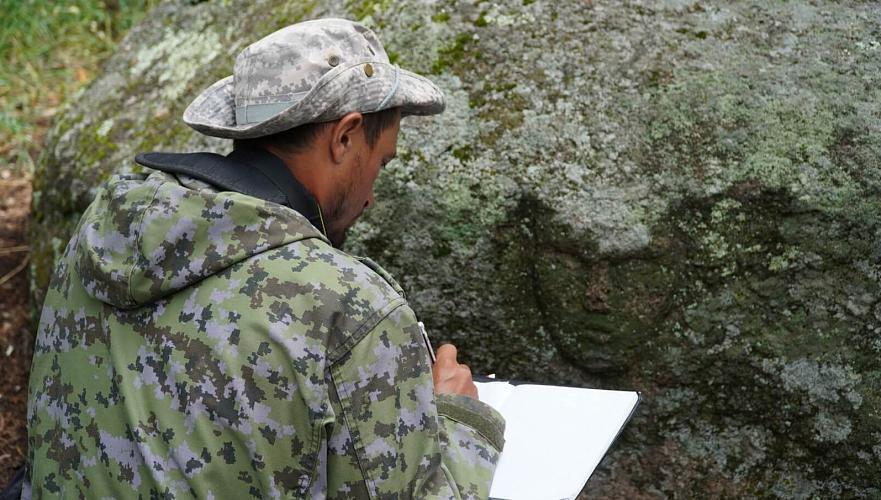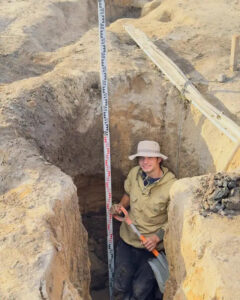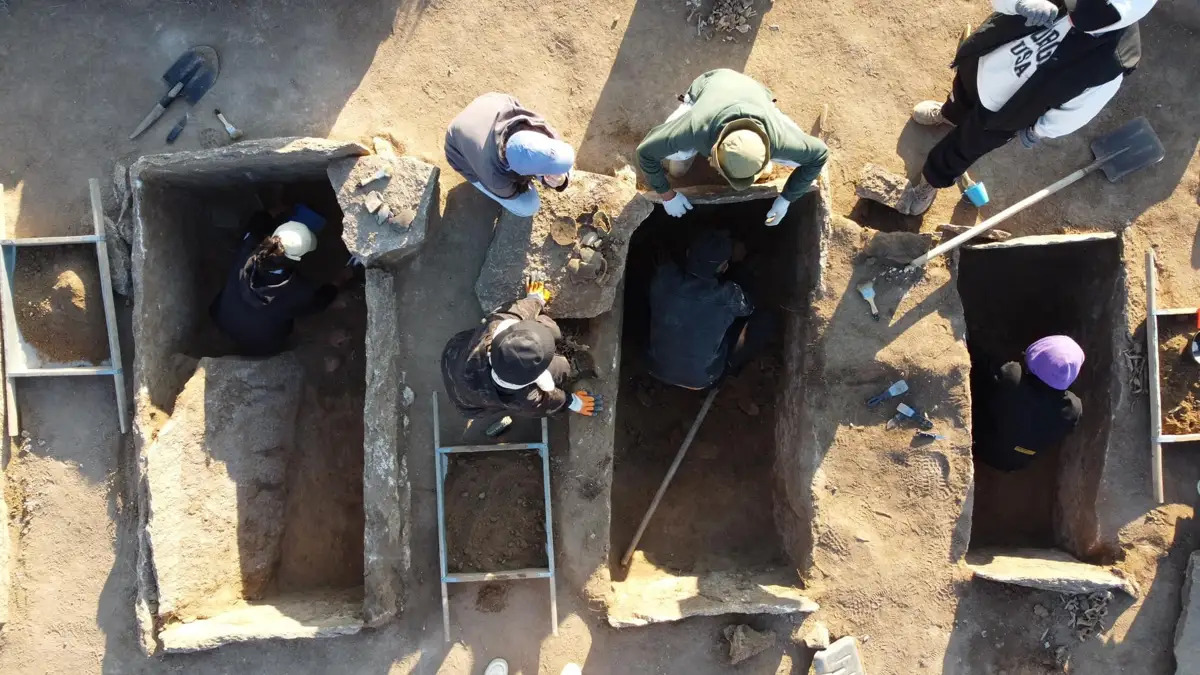ASTANA — Kazakhstan’s rich archaeological landscape continues to reveal stunning insights into ancient civilizations. Recent discoveries across the Akmola, Pavlodar and Karagandy regions have uncovered significant artifacts and burial sites dating back to the Bronze Age.

Photo credit: gov.kz.
Stone carving discovery in the Akmola Region
A remarkable archaeological find has been uncovered in the Akmola Region of Kazakhstan. During a routine inspection as part of the preventive Orman campaign in the Sandyktau district, staff from the Department of Emergency Situations stumbled upon a stone carving depicting a human face. This significant artifact, dated to the Bronze Age, adds a new dimension to our understanding of ancient art in Central Asia.

Photo credit: Akmola Region’s Department of Emergency Situations.
Sergey Yarygin, a leading scientist from the Alkey Margulan Institute, noted that similar carvings have been found in Bronze Age sites across Central Asia and Eastern Europe. He also pointed out the presence of analogous images in the early Iron Age in southern Siberia and in medieval Turkic cultures that spread across the Eurasian steppes. Despite these parallels, Yarygin emphasized that the exact period of the artifact remains uncertain, as it could belong to various historical epochs, including more recent times.
The discovery has generated considerable interest both locally and internationally. The artifact is now under the protection of the local heritage authorities and has been reported to both the regional Department of Emergency Situations and the local history museum. This finding is expected to draw more scholarly attention and may prompt further archaeological investigations in the area.
Significant Bronze Age findings in the Pavlodar Region
In the Pavlodar Region, an archaeological expedition led by the Pavlodar Pedagogical University uncovered several rare and valuable artifacts at the Koktas complex. The most notable of these is a bronze spearhead, attributed to the Sargarin-Alexeyev culture, dating back to the mid-13th to the 8th centuries BCE. This spearhead, discovered by second-year student Asylbek Yelaman, is considered a unique find for the region.

Photo credit: Ministry of Culture and Information.
In addition to the spearhead, fragments of pottery kitchen utensils were also unearthed. These fragments exhibit various decorative patterns, including designs created using fingernails and comb-pattern motifs that incorporate triangular shapes and straight lines. Such patterns are reminiscent of those found in Novosibirsk, but the closely spaced arrangement of the designs at Koktas indicates a distinct local style.
The Koktas site also contains over 20 burial mounds, some of which date back to the Saka period. Excavations have revealed numerous human and animal remains, as well as fragments of ceramic kitchenware and bronze arrowheads. Notably, at a depth of 30 centimeters in one of the burial pits, archaeologists discovered an earring characteristic of the Saka period, providing a basis for dating the burial. The burial orientation of the individual, from west to east, was also determined.
Ancient buildings and mines for extracting and processing copper ore, dating back 3,500 years, were discovered at the site. These findings provide valuable insights into the early metallurgical activities in the region. Currently, all uncovered artifacts are undergoing necessary laboratory processing for further analysis and preservation.
Ongoing research in the Karagandy Region
Archaeologists from the Saryarka Archaeological Institute, in collaboration with students from Karagandy Buketov University, have been conducting fieldwork at the Taldy-1 necropolis within the Taldy Historical Archaeological Park in the Karagandy Region. This Bronze Age site features a large rectangular enclosure, measuring 18 by 4 meters, oriented northeast to southwest. The enclosure is composed of vertically embedded stone slabs, some of which have shifted or are missing.

Photo credit: Ministry of Culture and Information.
The site is characterized by a single large pit that contains ten burial chambers arranged in a linear sequence, indicating a mass burial event. This arrangement suggests a simultaneous death of a small tribal group, potentially due to an epidemic. Within the eastern part of the enclosure, disarticulated horse bones and fragments of geometrically decorated pottery were found, likely remnants of a funerary rite.
Numerous artifacts, including bronze jewelry, bone arrowheads, and ceramic vessel fragments, were uncovered during the excavation. These artifacts are consistent with the Alakul culture of the Central Kazakhstan Bronze Age, dating the site to the 17th-16th centuries BCE. Researchers suggest that the egalitarian nature of the burial practices reflects a societal shift during a period of relative peace, where the role of women and religious figures may have gained prominence over the traditional warrior class.


